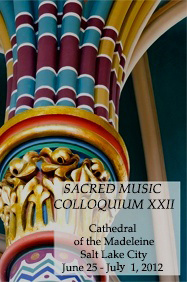Another beautiful writng by Fr. Rob Johansen,
One of my favorite Advent hymns is the old French carol “People, Look East”. It has always seemed to me to exemplify the joyful expectation of the Advent season. While I’m not sure what, if any, expert consensus there may be on the matter, I’ve always thought of it as a late Advent hymn – one to sing in the week or two before Christmas, and maybe even on Christmas eve. The hymn urges us to get ready: Love, in the Christ child, is on the way! He’s almost here, as the last verse tells us:
Angels, announce with shouts of mirth
Christ, who brings new life to earth.
Set ev’ry peak and valley humming
With the word, “The Lord is coming.”
People look East, and sing today:
Love, the Lord is on the way!
Christ is the light of the world, as Simeon prophesied in the temple (Luke 2:32), and as John wrote in his Gospel (John 1:4-5). He illuminates the souls of those who belong to him. So the Church, from the earliest times, has seen the light of the sun, particularly at dawn, as a symbol and image of Christ. Zechariah refers to the coming Messiah as the “daybreak from on high” (Luke 2:78). At the end of the book of Revelation, Jesus describes Himself as the “bright morning star” (Rev. 22:16). The early Church, reflecting on this symbolism, attached great importance to worshipping Christ at dawn, especially on the first day of the week, which was also the day of resurrection. The early Church attached great importance to facing towards the dawning light in its prayer as well. Early churches were built so that, when the assembly gathered for prayer, they faced the East. When Mass was celebrated, priest and people faced not each other, but together faced the altar, toward the East. St. Clement of Alexandria (150 – 216 AD) explained:
... And since the dawn is an image of the day of birth, and from that point the light which has shone forth at first from the darkness increases... In correspondence with the manner of the sun’s rising, prayers are made looking towards the sunrise in the east. (Stromata Book IV, ch. 7)Even when, as the Church grew, it was no longer possible to build every church so as to have the altar facing eastward, the custom remained of having priest and people together face the altar during the Eucharistic liturgy, facing the Daystar who came to be with His people on that altar. This posture of priest and people facing the altar is known as ad orientem, which is the Latin for “toward the East”. Most Catholics who are aware of this posture would probably associate it with the Extraordinary Form of the Mass, that is, the Mass as it was celebrated before the liturgical reforms of the 1970’s. Indeed, one of the liturgical changes most associated with Vatican II is that of turning the priest around so that he faced the people. Many Catholics would probably imagine that this change was mandated by Vatican II, and that the former posture of ad orientem had been abolished. But this impression, widespread though it is, is incorrect. In point of fact, no document of Vatican II and nothing in the rubrics of the modern Roman Rite either requires the priest to celebrate Mass facing the people or abolishes celebrating Mass ad orientem. Our Holy Father Pope Benedict, while he was still Cardinal Ratzinger, wrote of the desirability of returning to the ancient practice of ad orientem celebration, expressing himself very strongly:
...A common turning to the East during the Eucharistic Prayer remains essential. This is not a case of something accidental, but of what is essential...What matters is looking together at the Lord. (Spirit of the Liturgy, p. 81)As Pope, Benedict has gone so far as to publicly celebrate Mass using the ancient ad orientem posture. And many priests and parishes, all over the United States and indeed, the world, are beginning to take up the Pope’s lead in restoring this tradition. At my own parish we have begun using it from time to time, and several other parishes in the Kalamazoo diocese have adopted ad orientem, some even doing so entirely. What this ancient posture underscores is the essential message of the liturgies of Advent: We are all to be turned toward the Lord, waiting for His coming. For some two millennia the people of Israel waited for the coming of the Messiah. He has come, but we still have the experience of waiting expectantly for Him, every time we celebrate the Eucharist. And if we are turned towards Him, if we are oriented in the direction of His coming, then we can have blessing which was given to the shepherds on the night of His birth – the glimmer of a faint purple light in the East, growing to the ray of light from the Daystar. A light shining not from the sky, but from an infant, who is Himself the Light of the World. People, look East! Love, the Lord is on the way!
http://thrownback.blogspot.com/
Subscribe to:
Post Comments (Atom)

1 comment:
Excellent post, thanks!
Post a Comment